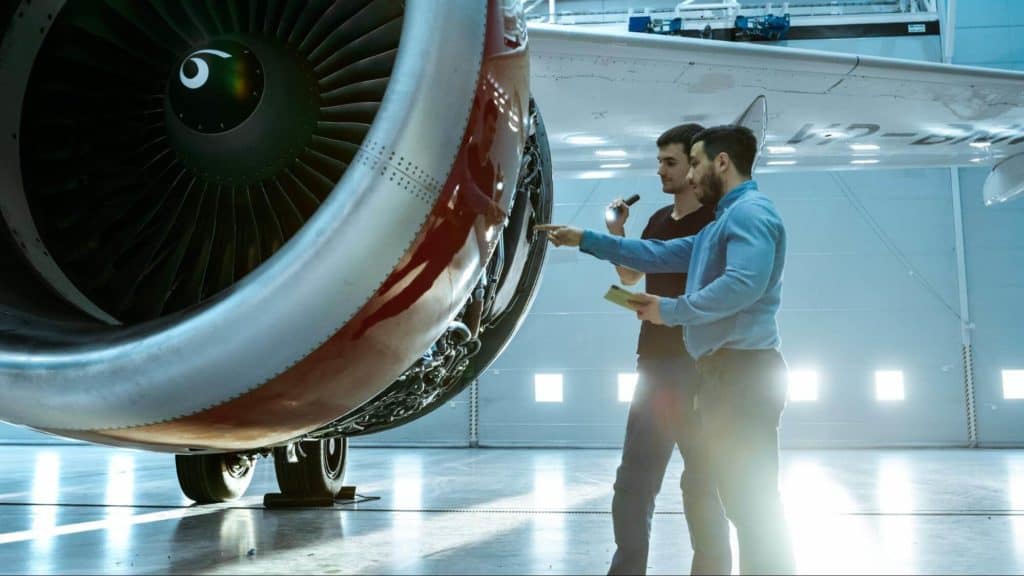The Top Aircraft NDT Inspection Solutions

Safety is the single most crucial factor in the aerospace industry. When a failure happens, it can lead to widespread repercussions. While some failures are attributable to simple human error, a concerning number occurs because small flaws escaped detection and became terminal failures. Aircraft NDT inspection isn’t just about meeting regulations and minimizing downtime—it’s about detecting the discontinuities that could lead to disasters.
For that reason, there is a wide range of solutions centered on testing the various components of an aircraft rapidly and accurately. More traditional methods have paved the way for complex, sophisticated technology capable of inspecting even the deepest layers of materials. When these tools are in the hands of an experienced operator, it’s much easier to catch small flaws before they become significant points of failure.
Common Challenges in Aircraft NDT Inspection
While safety should always be the primary goal of aircraft inspections, most of those responsible would also like to be able to accomplish these reviews quickly and cost-effectively. Barriers occur because aircraft NDT inspections present a unique set of challenges specific to the industry. These challenges include:
- Disparate components: Curved surfaces, flat surfaces, multilayer skins, wheels, landing gear, bolt holes, engines, and frames all require testing. Parts can be metal or composite materials, meaning that some NDT solutions may not be suitable for both.
- Speed: Downtime in an airline can have a domino effect. A slow inspection results in offline equipment that can delay flights. Those delays trickle through the entire travel program.
- Risk: Failure to accurately detect a flaw in aerospace NDT testing can result in a terminal failure that could put lives at risk. Accuracy is critical to ensure the flight-worthiness of equipment.
- Cost: Airplane components are highly detailed and expensive to manufacture. Testing must preserve the integrity of these parts while also being thorough enough to reveal discontinuities.
- Regulations: Aircraft are heavily regulated for good reason. It’s vital to maintain accurate, highly detailed inspection records to meet requirements and avoid fines and penalties as well as potential catastrophic failures.
Many different solutions exist to meet all the above challenges in NDT inspection, with varying levels of effectiveness. Everything from visual assessments to the use of sophisticated instruments has been developed to detect aircraft flaws while ensuring speed and efficiency.
Challenges with Existing Aerospace Inspection Solutions
The most straightforward approach to aircraft NDT testing is the traditional visual inspection. While this is ideal for seeking out clear and obvious defects, it also garners the least accurate results due to the potential for human error. More detailed methods enhance accuracy in discovering weaknesses.
Dye or liquid penetrant (LP) testing is a simple solution that employs the use of dye drawn into pinholes or cracks that break the surface. This process allows the inspector to see defects that may not have been visible before. Of course, it’s only suitable for testing for surface cracks and requires significant part preparation to avoid the risk of false positives from dirt or debris. The user will also have to contend with the disposal of chemicals and record the results manually, which could lead to errors in transcription.
An alternative method called magnetic particle inspection (MPI) eliminates the need for chemicals by instead using a fine ferromagnetic material, which will gather in cracks or surface breaking flaws. This method is another where ample prep time and cleanup is required, as is manual cataloging of results.
Radiography is another time-tested technique that eliminates many of the flaws inherent in both LP and MPI testing. X-rays examine the object for internal defects, providing a much more in-depth view than other methods. However, this is dependent on radiation, meaning that safety equipment is required which makes moving the unit cumbersome, leading to delayed inspections. There’s also the risk of continued exposure to contend with as accumulated contact can lead to serious medical conditions.
Increasing Speed and Flexibility in NDT Testing
There are two aircraft NDT inspection options that provide the speed, accuracy, and flexibility needed to address all the challenges in the industry while allowing for easy recording of highly detailed results. Eddy current and ultrasonic testing are both applicable for a wide range of aeronautical uses.
Eddy current testing (ECT) pushes alternating current through a probe and into the component to locate discontinuities. Eddy current array (ECA) is a newer technology that is suitable for surface and sub-surface inspections of skins, frames, stringers, and other conductive parts. Equipment is typically portable and contained, with the ability to screenshot and catalog results to ensure detailed, accurate reporting.
For full volumetric inspections include the testing of composite materials, ultrasonic testing acts as an ideal solution. In this, sound waves are used to locate echoes in the material that indicate discontinuities. Phased Array Ultrasonic Testing is a gold standard here, using between 16-256 active channels to provide highly detailed results rapidly.
Using a combination of these two methods allows inspectors to address all the needs of components while maximizing efficiency and accuracy. The two offer portable options ideal for working in tight, controlled spaces with minimal object preparation.
No aircraft NDT inspection solution is ever flawless. Much of the onus will be on the operator to use the device correctly and accurately interpret the results. However, by using more effective aerospace solutions to aid those inspectors, it’s possible to increase the chance of success and ensure the stringent needs of aircraft safety are met.
| Discover advanced aircraft NDT inspection solutions with our aerospace NDT technology webinar. |
Zetec offers the top aircraft NDT inspection solutions for both speed and accuracy. Visit our contact page for more information.
